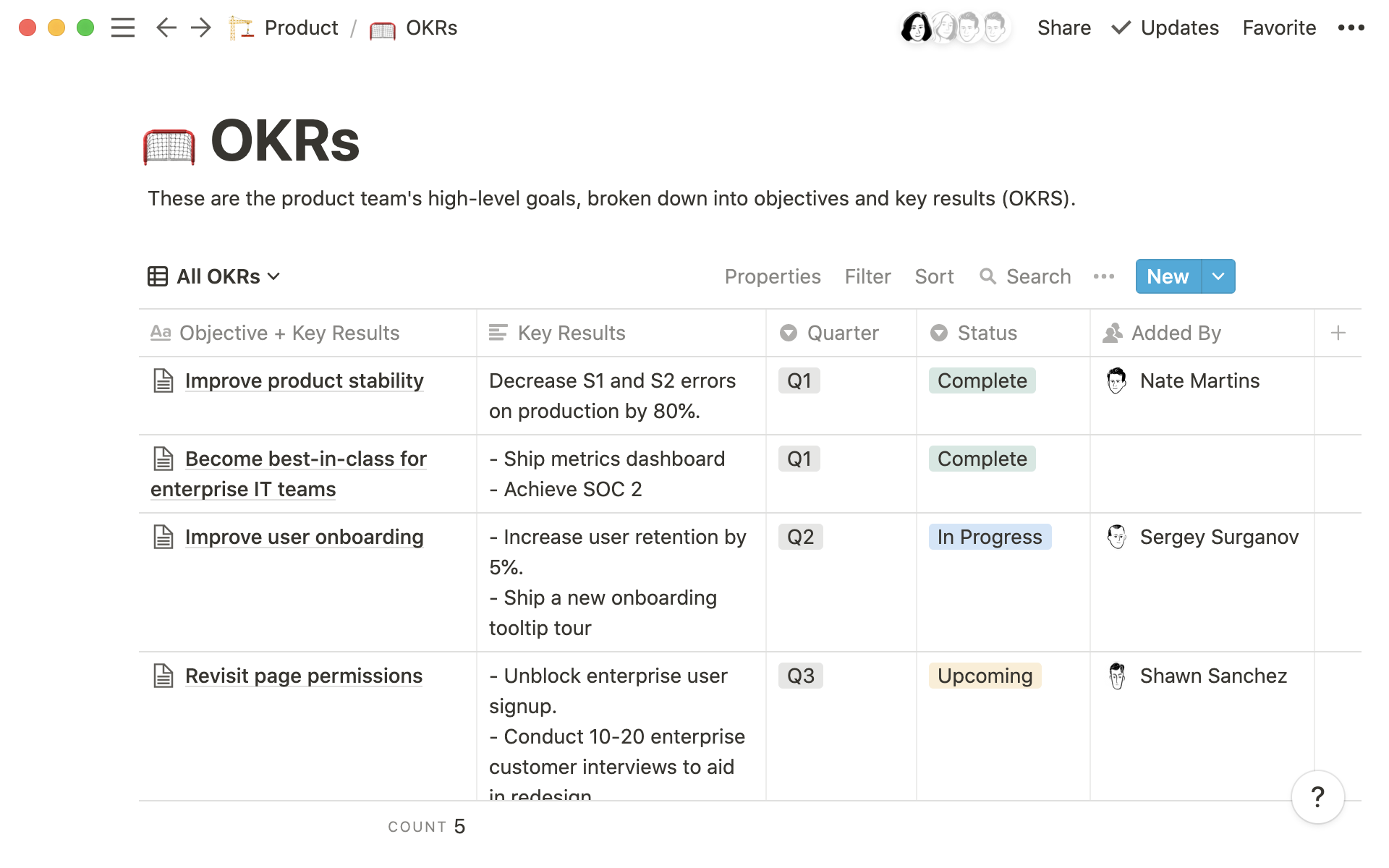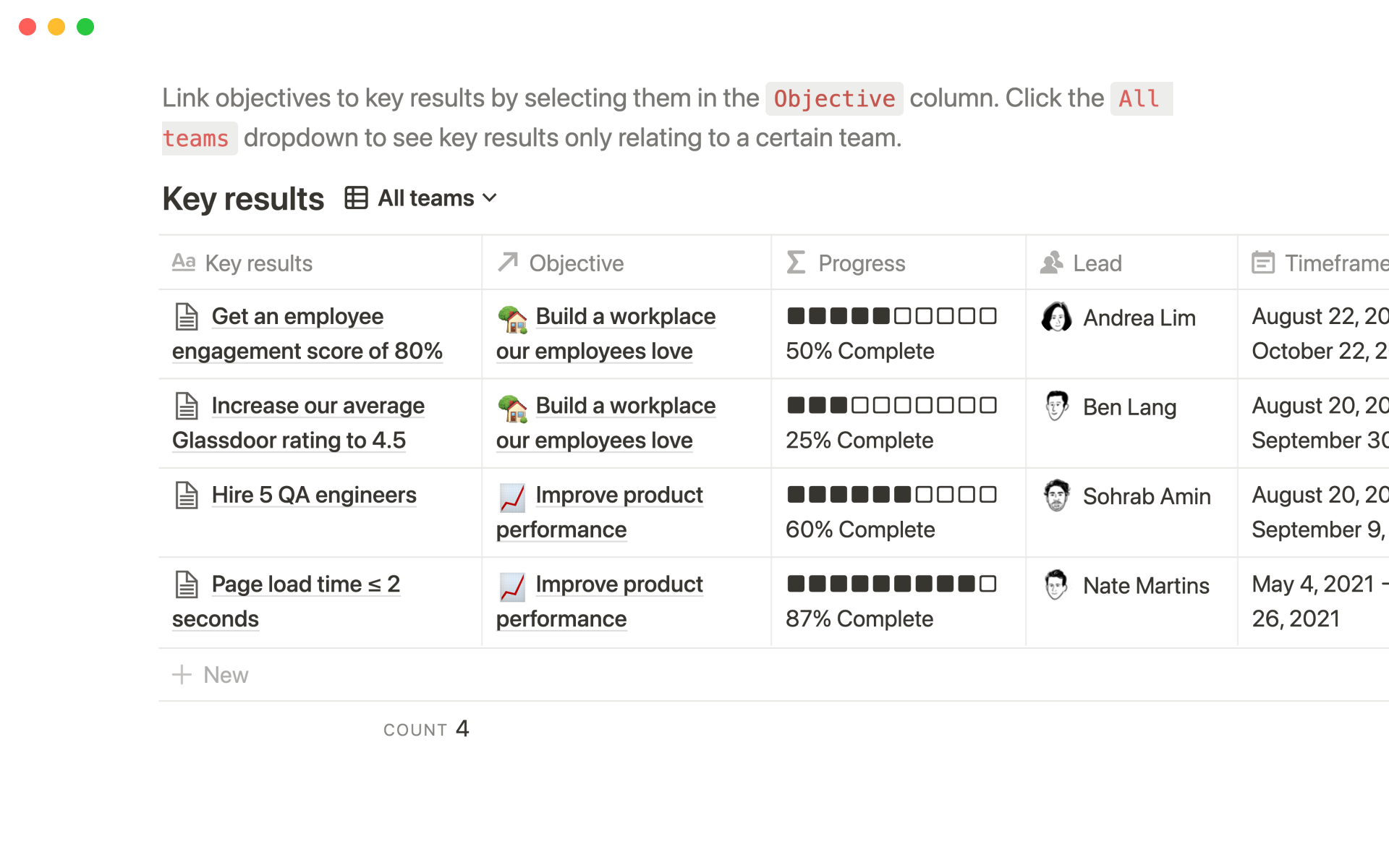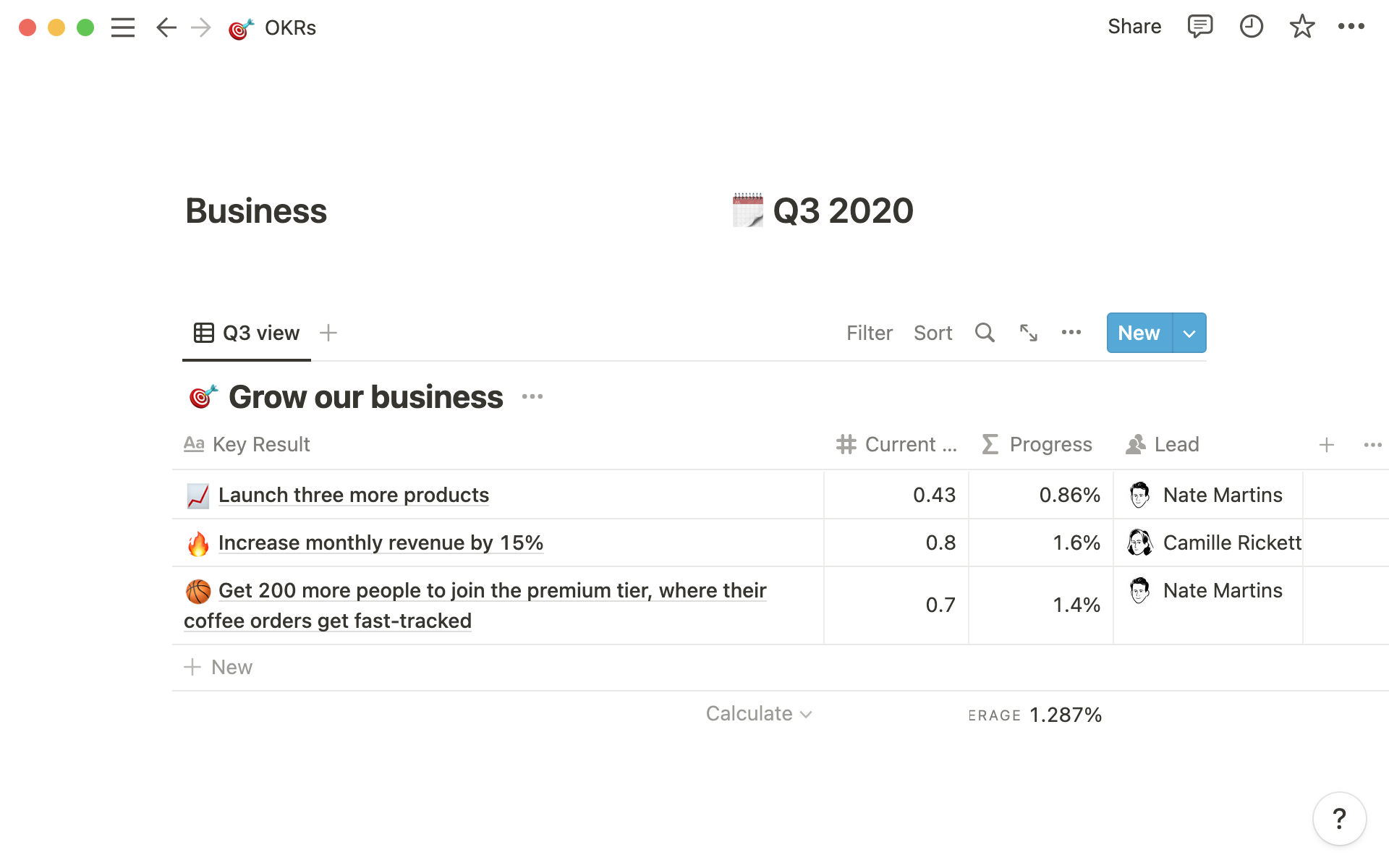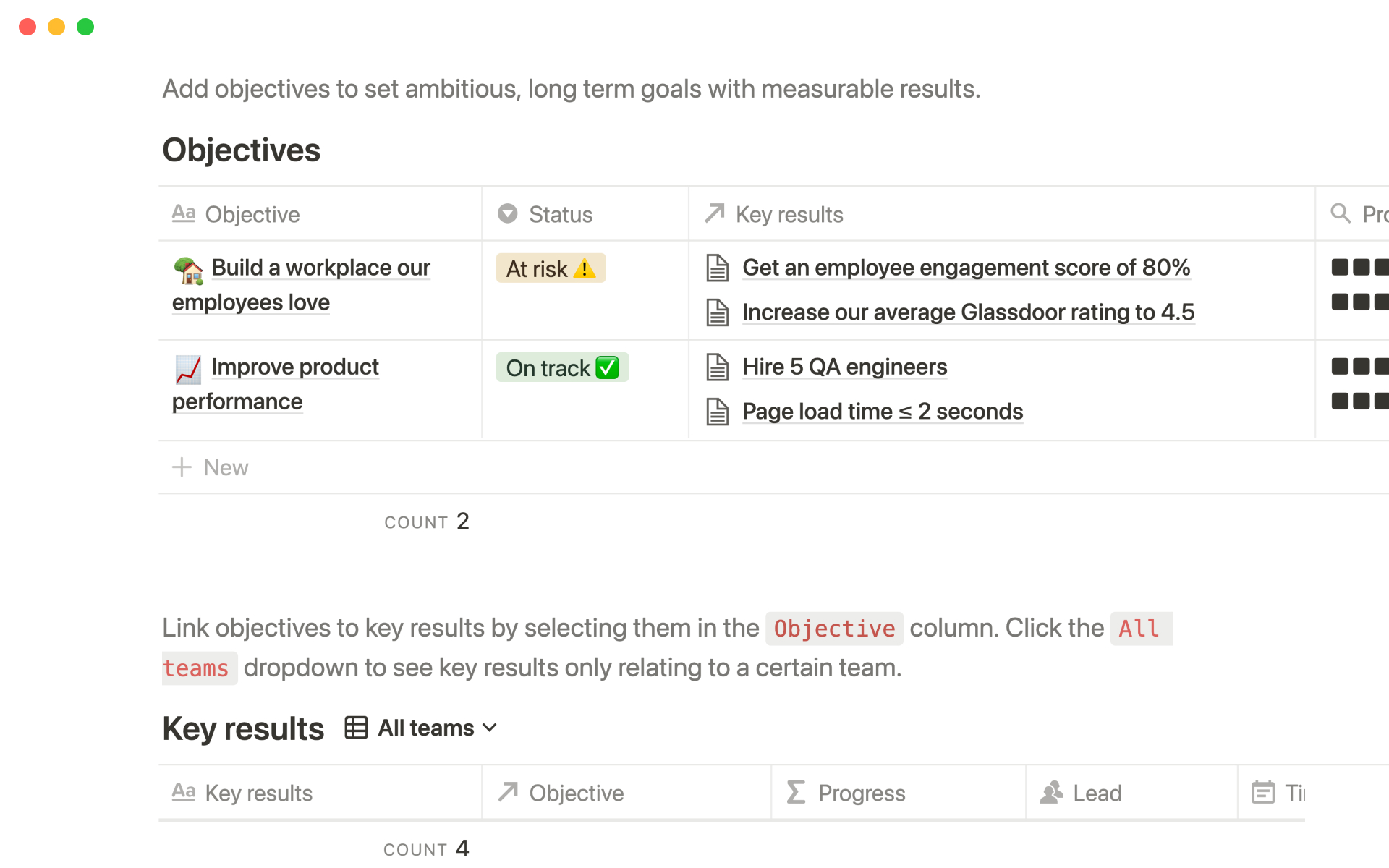Tracking OKRs has never been more powerful. Manage tasks in the same workspace and track progress with ease.

How OKR frameworks help track progress toward your goals
Objectives and key results (OKRs) help you identify, set, and achieve measurable goals — and OKR software puts all the relevant info in one place.
Use Notion to identify and organize your objectives, track your team’s progress, and assess the results.

With Notion’s OKR framework you can:
Set OKRs in the same workspace where you manage tasks and projects
Enable OKR tracking across multiple dashboards
Automate how you track and measure team goals
Integrate with other OKR tools to collect actionable metrics

How to do OKRs in Notion
Create a Notion account and team workspace.
Design a page with an OKR template or start from scratch.
Start setting goals and ways to measure them.
Add custom properties, dates, and relevant tasks.
Invite team members and set their access permissions.



Integrate your OKRs with your Notion workspace
Unify your team dashboard, metrics, and other data to keep your team unified and on track to meeting your collective goals.
FAQs
What's an OKR vs a KPI?
What's an OKR vs a KPI?
OKRs use goal setting to measure your team's progress toward business or project goals. One example of OKR goal might be to increase sales by 15% in Q3.
Key performance indicators (KPIs) measure ongoing performance. A KPI isn’t a goal in itself but a way to calculate teams' success toward achieving specific goals, like total number of ecommerce sales or average revenue per user.
What are the three types of KPIs?
What are the three types of KPIs?
The three common KPI types include:
Outcome KPIs — quantitative indicators that measure the end result of a process or activity, like revenue or customer satisfaction.
Process KPIs — quantitative indicators that measure performance, like average handle time or first call resolution.
Driver KPIs — quantitative or qualitative indicators that represent inputs you need, like additional staff and resources.
What’s a good key result for an OKR?
What’s a good key result for an OKR?
A good key result is specific, measurable, attainable, relevant, and time-bound (SMART). You should be able to measure and track this result and adjust the goals if things aren’t going well (or if they’re going extremely well!).
Key results should also align with the overall objective of the OKR.